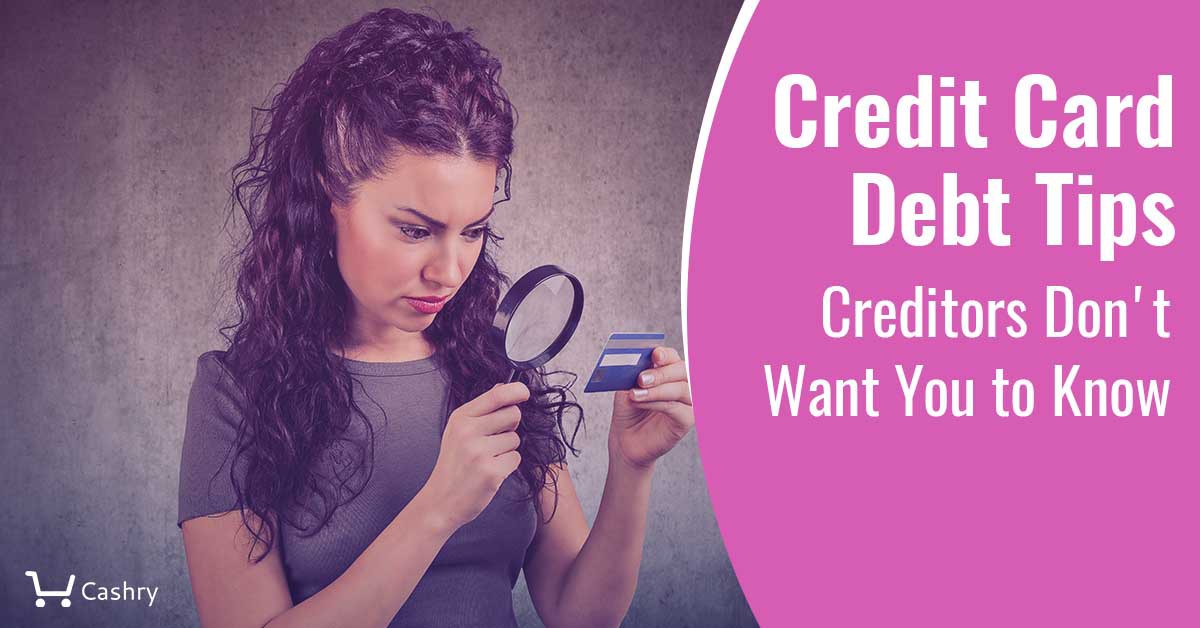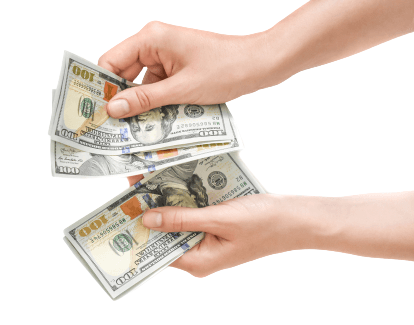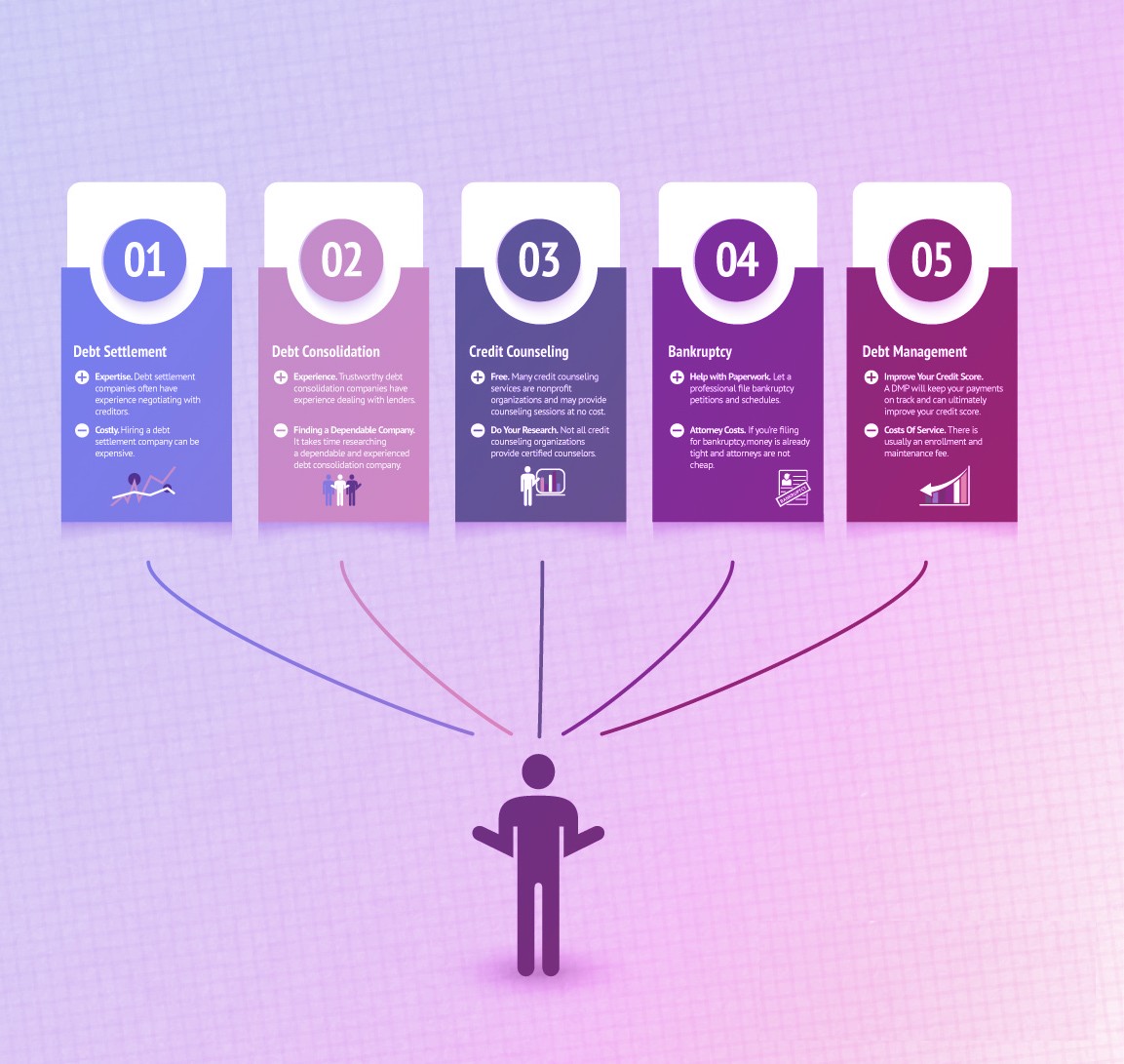Credit Card Debt Tips Creditors Don’t Want You to Know

There is no one way to get out of credit card debt since it will depend on your situation. You can rely on a number of credit card debt tips, whether it’s paying off each card individually, transferring your balances, or asking for a lower interest rate. Whatever your financial goals are, getting rid of your credit card debt is a good step in the right direction.
Why Credit Card Debt Is So Dangerous
When it comes to debt, credit card debt is often the worst. Credit card issuers may lure you in with a low introductory APR. However, that once low APR will expire at some point. When it does, you may find yourself with an overwhelming amount of debt if you didn’t mange the new account in the right way. Revolving debt can be so overwhelming because credit card interest rates are high. If you are just making the minimum payment each month, it may even take you decades to pay it off. During this time, you will be paying a lot in interest. For example, if you charge $8,000 on your card that has a 17% APR and only make the minimum payment, it will take you almost 16 years to finish paying it and you will be spending $7,000 just in interest.
Not only can credit card debt be overwhelming and costly, it’s also risky. Credit card debt usually represents a risk and can be a warning sign of trouble and will eventually hurt your credit score. It’s easy to get in too deep. Unlike other kinds of debt, the interest on your credit card balances is not tax deductible. In contrast, interest you pay on your mortgage will give you a deduction.
Understand How You Got Here
It helps to understand how you got here before you move forward with credit card debt tips. The piece of plastic can be a good tool and you can use your credit cards to pay for things you actually need and build up your credit in the process. When your spending gets out of control then you are in credit card debt. A high balance and finance charges can be a real issue on your wallet and limit your financial options, both in the present time and in the future. When you understand how you got into credit card debt, you will be better able to change your financial habits.
Steps to Get Out of Credit Card Debt
With so many credit card debt tips, it also helps to know the steps to get out of debt.
1. Evaluate Finances
Your first step to tackling credit card debt is to look at your financial situation. Create a list of everything you owe, including your credit card debt and all your monthly bills. Then review the overall debt, including the balance and the annual percentage rate. This will help you form a payment strategy later. Compare your expenses and your debt. You need to consider your other obligations, such as your mortgage or rent, grocery bills, and debt. When evaluating your income, take a look at your salary and anything else that can generate money.
2. Prioritize Your Spending

When figuring out a plan for credit card debt, you need to cover the basics first. This includes housing, food, and clothing. Pay at least the minimum amount on your secured debts. A secured debt is debt secured by an asset or some form of collateral, such as a home or car. If you don’t make timely payments then you risk losing the asset. Then tackle the credit card debt. Also focus on student loan debt while battling your credit card debt. The federal government, which backs most student loan debt, can punish you if you default on repayments of student loans, such as by garnishing your wages or your tax refunds.
If you have private student loans then the lender isn’t able to go after your wages but they can still pursue legal action. In order to prioritize spending, don’t use your cards while you are cutting down your debt. Be sure you are making all the minimum payments on all your outstanding debt to protect your credit score.
3. Create a Budget
Once you have priorities for your spending you need to create a budget. Having a budget is one of the most important credit card debt tips. A budget can help you track your spending and be able to get a better handle on how to lower your debt. Now is the time to be strict with your budget. Be honest about your obligations.
4. Be Realistic
It’s understandable that the goal is to get out of debt as fast as possible, and habit changes and working a side hustle can help you get there faster, but you need to be realistic. The best credit card debt tips will only do so much. You have to just keep paying. There are some common questions from people who are looking for credit card debt tips.
How can you pay off debt faster?
Paying as much as you can will help you pay off debt faster. The more you pay above the minimum payment then the faster the process goes. You can tap into savings or sell things around the house to pay off debt faster. Keep in mind that if you are doing things like debt consolidation, it’s not really paying off your debt but you are just moving it around.
How do you get out of credit card debt without paying?
The only way to get out of your credit card debt is by paying it off or filing for bankruptcy.
Is it best to pay off a credit card all at once?
If you pay off your card all at once then this can make a bigger score jump than paying it off over time since you will lower your credit utilization ratio.
5. Find the Right Payment Strategy
One of the first credit card debt tips you should do is to find a payment strategy that will work for you. Having an attainable goal and strategy helps keep you in check.
Debt Snowball
The debt snowball method helps you pay down your debt using accomplishment as motivation. You prioritize your balances by amount and focus on the smallest one first. When you have paid that one off, you then roll that into the next payment, and so on. This strategy gets its name because of a snowball rolling down a hill; you are slowly making bigger and bigger payments until you finally eliminate your debt.
Debt Avalanche
This method is similar to the debt snowball method but your priorities are changed. Instead of working toward the lowest balance fist, you are going to work on the card with the highest interest. This can be a cheaper method than snowballing because you are tackling high interest first.
Debt Snowflake Method
Both the avalanche and snowball methods mean you have to budget a certain amount of money to repay debt each month. Instead, with this method, you earmark a small amount of what you save each month and then use that money to pay down your debt. This method can be useful if you aren’t able to budget some extra money for your card payments but it does require more work and is less reliable.
Pay More than the Minimum
This isn’t so much a strategy as one of the best credit card debt tips. If you want to pay down your debt quickly then you need to pay more than the monthly minimum payment. Creditors don’t want you to do this because they make money off the interest they charge each period so the longer it takes you to pay back the debt, the more money they make.
Automate
Automating your payments can be a great strategy to make sure your debt is being paid and you aren’t racking up any additional late fees. If you are working with the debt avalanche or debt snowball approach, you will likely need to be a little more hands on so you can contribute exactly what you need to for each account.
Using a Loan to Pay off Credit Card Debt
If you currently have a decent credit score then a balance transfer credit card or consolidation loan can make paying off debt easier. In order to get debt relief with these options, you likely need to have a decent credit score for it to make a difference.
Debt Consolidation Loan
A debt consolidation loan is a personal loan that you use to pay off your higher interest debt. With this loan, you are able to combine several different credit card balances into one monthly payment and a lower overall interest rate. Many debt consolidation loans will offer fixed rates that won’t get higher, even if the interest rates nationally are rising. The interest rate on these loans can be lower than credit cards. A benefit of debt consolidation is you get a set payment plan, which you won’t get with a credit card, so you can rest assured you will be debt free in that set amount of time as long as you aren’t racking up more debt.
However, a word of caution is that you may not get a better rate than what your credit cards are currently charging. This could mean a higher total monthly payment, which can be an issue if you are already struggling. Look for a lender that can prequalify you with a soft credit inquiry so it won’t affect your credit and you can see what rates you may qualify for to see if this is a good option for you.
Balance Transfer Credit Cards
Many credit card issuers will allow you to transfer a balance from one card to another. Some will even help you by giving you an introductory 0% APR promotion on these balance transfers. This means you could get up to two years to pay off your credit card interest-free. If you have debt across different cards, you can use this process to consolidate for a lower rate.
Different Help for Credit Card Debt
If you are really struggling to get debt under control then you may need some more serious steps. You may want to consider credit debt relief options.

Debt Management Plan
A debt management plan is created with the help of a nonprofit credit counseling agency. With this plan, a counselor will negotiate new terms with creditors and consolidate your debt. You pay the agency a fixed rate each month. Your accounts may be closed and you may have a set period where you can’t get any new accounts.
Debt Settlement
With debt settlement, a creditor will agree to accept less than the current amount you owe. While it may seem like a great deal, this option is not usually for most people. You will usually have to hire a debt settlement company in order to negotiate with creditors for you. There are also plenty of risks of debt settlement.
Bankruptcy
Filing for Chapter 7 bankruptcy will wipe out unsecured debt, such as credit cards, but there are plenty of consequences that come with filing for bankruptcy. Chapter 13 bankruptcy helps restructure debts into payment plans over three to five years and this can be an option if you have some assets you want to keep. Bankruptcy can stay on a credit report for 7 to 10 years, even though your credit score should bounce back a few months after filing. Certain debts, such as tax debt or student loans, can’t be erased in bankruptcy. If you decide to go this way, you need to plan how you are going to recover from bankruptcy!
How Debt Affects Your Credit
High balances on your cards can have a negative impact on your score. Payment history is the biggest influences on the score but your debt usage also plays a large role. The amount of debt you have in relation to the total credit limit is going to impact your score. If you are maxing out the card then your credit utilization is high and this lowers your score. Paying off your debt will have a positive impact on your score since it lowers this ratio.
Track Your Progress
You won’t know if you are successfully following credit card debt tips if you aren’t tracking progress. You don’t want to spend every day worrying over your bills but you should be keeping an eye on spending while you are paying down debt. Go back to your progress every few months. However, don’t let this consume your life. It did take you a while to get into debt so it’s going to take some time to get out of debt. Add some reminders to your calendar to check in our your finances. Keep the page with your starting balances and check your progress.
If you are using the debt snowball or debt avalanche method, you will have built-in checks since you have to adjust your spending once you make progress on one card. While you are tracking your progress, stash your cards and also avoid any new debt. Having some motivation and support during this stage will help you stay on track and make it easier when you feel like progress is stagnant.
What to Do Once You Are Debt Free
Once you pay off your credit cards it’s important to stay that way. The best thing you can do to accomplish this is to live within your means. If you do have old habits that creep in, you can use the card less often and mix in more debit and cash transactions. You can pick an accountability partner, such as a family member, spouse, or friend, to keep you honest. Request alerts from your credit card company when you have reached a certain balance. Stop using the cards if the temptation to overspend is strong. If you lose motivation to live a debt-free lifestyle, remember how good it feels to live debt-free and how living within your means can actually reduce some of the stress in your life. Set financial goals that make you excited.
In Conclusion
There are many different credit card debt tips to help you get out of the hole. By following a plan and some credit card debt tips, you can get your self out of debt as long as you are tracking your progress. Finding something that will work for you is key and there are different payment methods, as well as options for those who need severe credit debt relief. When you are debt-free after following credit card debt tips, be sure you stay debt-free with some new financial goals.


Jackie Strauss is a finance writer with a background in economics living in Los Angeles. She has a passion for helping readers learn more about personal finance, insurance, home loans and paying down debt. As a college student during the Great Recession, she has had to learn budgeting and money saving techniques to become a new homeowner.

